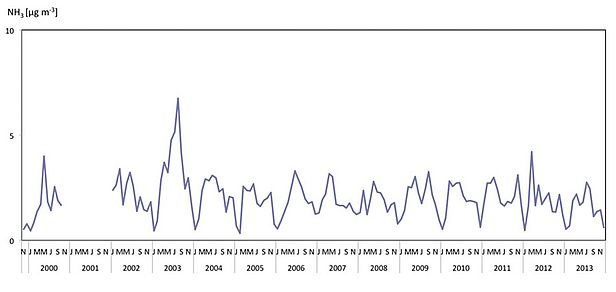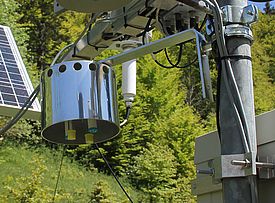Ammonia (NH3) mainly originates from livestock farming and is currently the most important source of nitrogen pollution in ecosystems in Switzerland. It plays a major role in the overfertilisation and acidification of forests, bogs and fens, biodiverse natural meadows and heathlands. Especially in ecosystems that are naturally poor in nutrients, the input of ammonia has a negative effect and changes the species composition.
Objectives of the measurements
- To monitor the ammonia concentration over the course of the year and its spatial variation between different site types;
- to contribute to quantifying the total nitrogen input;
- to review measures taken to reduce ammonia emissions due to agricultural activities.
The atmospheric ammonia concentration is determined using Radiello passive samplers. Two passive samplers are mounted in an aluminum shelter, on the mast of the meteorological measuring station, 2 m above the ground. The passive collectors are replaced every four weeks and chemically analysed in the laboratory of the Research Centre for Environmental Observation (FUB).


